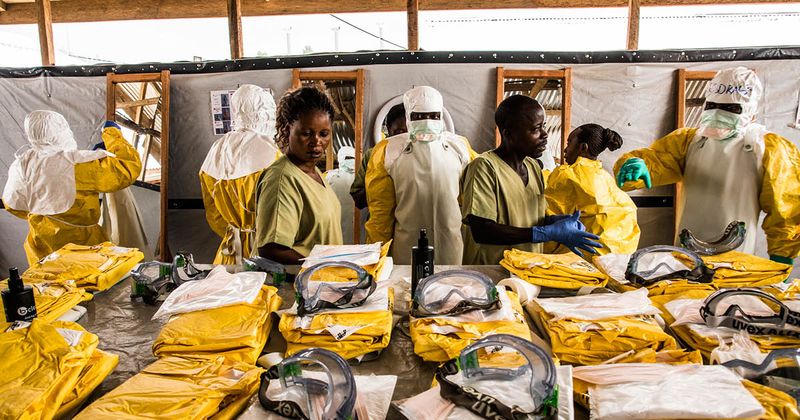Rapid testing can detect Ebola-related deaths, reducing transmission through burials
An FDA-licensed rapid antigen test was able to detect Ebola-related deaths among nearly 500 people who died during a large outbreak in the Democratic Republic of the Congo, according to a new study published in Emerging Infectious Diseases.
Molecular testing confirmed that the rapid diagnostic test (RDT) used in the study, the OraQuick Ebola Rapid Antigen Test (Orasure), produced no false negative results, “suggesting that quick public health actions" — such as the safe burial of people who have died from Ebola — “can be based on RDT results alone,” researchers wrote.

The bodies of people who have died from Ebola are highly contagious. Contact with them — a custom that is part of traditional local funeral practices — can lead to multiple chains of transmission, the CDC noted in a summary of the new study. In 2014, the 3-day funeral of a prominent pharmacist in Sierra Leone who died from Ebola during the West African epidemic, was linked to at least 28 new cases.
The new study centered on the Ebola virus outbreak that took place from 2018 to 2020 and was the largest outbreak in the Democratic Republic of the Congo (DRC), leaving more than 2,200 people dead.
“Challenges in controlling this [Ebola] outbreak included security threats, widespread community mistrust in response activities, and low acceptance of systematic safe and dignified burials (SDBs),” Daniel Mukadi-Bamuleka, MD, of the National Institute for Biomedical Research in the DRC, and colleagues wrote. “The difficulty with SDBs was in part because of long turnaround times (4 to 72 hours) of required quantitative reverse transcription PCR (RT-PCR) results for burial to bereaved families.”
Following a pilot study conducted during active Ebola transmission in three DRC health zones,
Mukadi-Bamuleka and colleagues used the OraQuick test to screen bodies for Ebola virus infection during a post-epidemic period of enhanced surveillance.
In total, they tested 443 cadavers and collected swab specimens from 272. Of the 443 samples, 425 (96%) had nonreactive RDTs, 11 (2%) were invalid and seven (2%) were reactive. Quantitative RT-PCR testing yielded six false-positive and no false-negative results, the researchers reported.
“In conclusion, postmortem OraQuick Ebola RDTs effectively complemented outbreak response efforts, improved community trust, and decreased the number of SDBs,” the authors wrote. “However, the reported 2% false-positive tests required further confirmation and were not immediately actionable. SDBs requested by families despite nonreactive RDT further highlight the need for further community engagement.”
